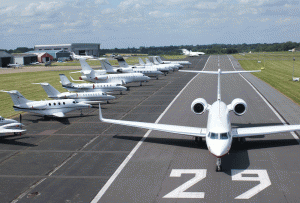Robert Walters, business development director at London Biggin Hill Airport, says that if the UK government does not recognise the importance of business aviation the country will not be able to keep up with demand.
Last week, as the British Chancellor announced the new Budget, the UK’s Business and General Aviation industry leaders met to discuss the market at a time of pronounced political uncertainties, particularly in Europe and North America. But despite ongoing political shifts, it must be business as usual for the rest of us.
As with any industry, there are those tenets which are constant. For the property market it is the timeless principle of Location, Location, Location. For airports, there are a couple of adjustments: Location, Flexibility, Capacity. The latter of those is in crisis.
The business jet industry is a lucrative and constantly evolving market, with the next decade likely to see around 8,000 deliveries of business jets, worth nearly $250 billion. The emergence of dedicated business aviation airports is a growing trend in response to a massive surge in demand for more and more city-dyad links in an era of intensifying global business transactions. Within the next 10 years, emerging economies will dominate the market, both as producers and the customers of rapidly evolving new technologies. Indeed, this is strengthening the case for dedicated business aviation airports, and in the UK, just three dedicated airports (Farnborough, Biggin Hill and Oxford) now account for more than a fifth of the entire UK market. This reflects the strong demand for specialist FBOs away from the bustle of scheduled airliners.
As anyone working in aviation is acutely aware, the government is having to address the fact that by 2030, Heathrow, Gatwick, London City and Luton will all be full. Stansted will join the list by 2041.
Airport infrastructure in the South East of England is simply not growing fast enough to meet the huge surge in demand. Yet while we are all familiar with the debate surrounding Heathrow and third runways, we shouldn’t forget that the airports capacity crunch has taken its toll around the world. At VHHH in Hong Kong, there are now very few slots left for general aviation due to high traffic congestion, with reports of zero slot availability for days at a time, meaning that business jet users simply can’t get to one of the world’s leading financial centres.
In response to this, Hong Kong authorities are investing in infrastructure, with a HK$141.5 billion third runway due for completion in 2024. In Malaysia, Kuala Lumpur’s new passenger terminal is set to hit its peak annual capacity of 45 million passengers much earlier than projected; the government has duly set aside $1 billion to refurbish the city’s airport offering.
The dedicated business aviation airport model began to emerge in the US during the 1960s and 70s, as general aviation pilots became increasingly unable to use congested commercial service airports. The FAA, recognising this, encouraged the development of high-capacity general aviation airports, called reliever airports, in major metropolitan areas. Teterboro is one such base, and today is North America’s leading business aviation airport, providing as it does reliable and congestion-free infrastructure just 12 miles from Manhattan. This has been achieved because of the investment of the Port Authority of New York and New Jersey in resilient infrastructure – hangars, runways and taxiways – in recognition of demand.
In order to reflect the success in the US and fully harness the business aviation market in the UK, supportive planning policy is key, and we need to keep pushing to attain and secure Government recognition of business aviation. As with Teterboro, UK infrastructure must evolve to keep up with the thriving jet market.
Investing in the vehicle is not enough – we need to ensure that we have capacity to accommodate the suite of pioneering new aircraft in the medium and long term. The UK government needs to harness this competitive advantage in an increasingly global world, with infrastructure which is well placed and has the flexibility and capacity to secure future growth.
Source: CORPORATE JET INVESTOR.

 Hawker-Beechcraft Hawker 400XP
Hawker-Beechcraft Hawker 400XP Cessna Citation V
Cessna Citation V Beechcraft Premier IA
Beechcraft Premier IA Beechcraft King Air 350
Beechcraft King Air 350









